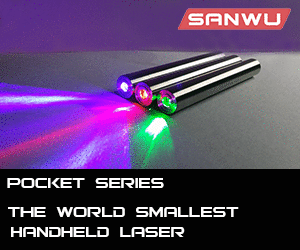RoDnSuE
0
- Joined
- Jul 15, 2010
- Messages
- 191
- Points
- 0
Hi everone,
I thought some might be interested in this...
Microscope
It's a USB microscope that can be outfitted with filters for specific wavelengths.
630 nm 690nm, >-= 91%
665 nm 730nm, >= 91%
715 nm 780 nm, >= 99%
780 nm 830 nm, >= 99%
830 nm 900 nm, >= 99%
850 nm 1100 nm, >= 99%
1000 nm 1300 nm, >= 90%
Wideband Dual Profile
Not really sure what you could use this for in lasers specifically, but I found it interesting since it had filters designed for various wavelengths of laser light.
It could be interesting when used in a cross discipline use. (ie. biology & lasers)
Rod
I thought some might be interested in this...
Microscope
It's a USB microscope that can be outfitted with filters for specific wavelengths.
630 nm 690nm, >-= 91%
665 nm 730nm, >= 91%
715 nm 780 nm, >= 99%
780 nm 830 nm, >= 99%
830 nm 900 nm, >= 99%
850 nm 1100 nm, >= 99%
1000 nm 1300 nm, >= 90%
Wideband Dual Profile
Not really sure what you could use this for in lasers specifically, but I found it interesting since it had filters designed for various wavelengths of laser light.
It could be interesting when used in a cross discipline use. (ie. biology & lasers)
Rod
Last edited:



